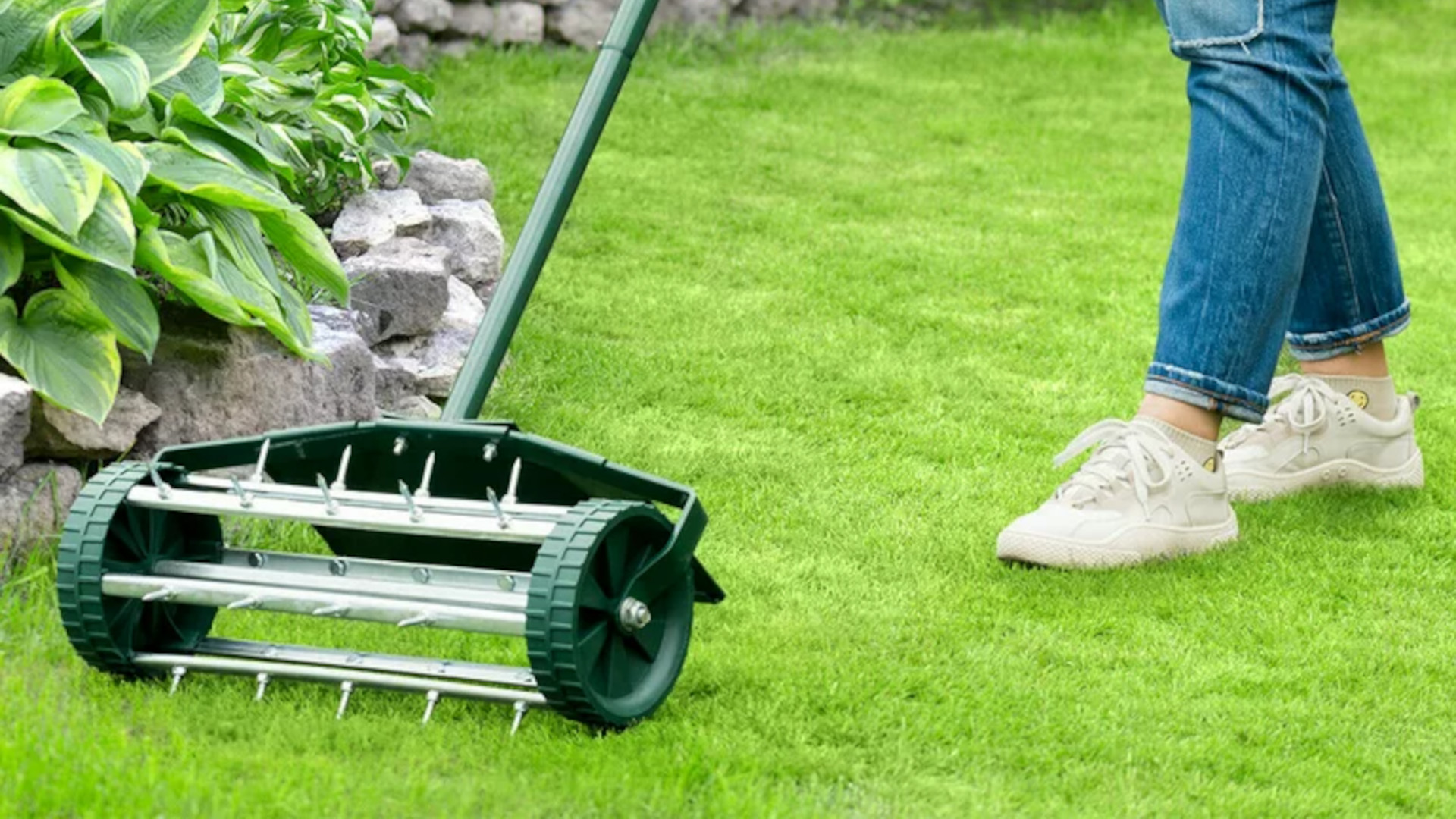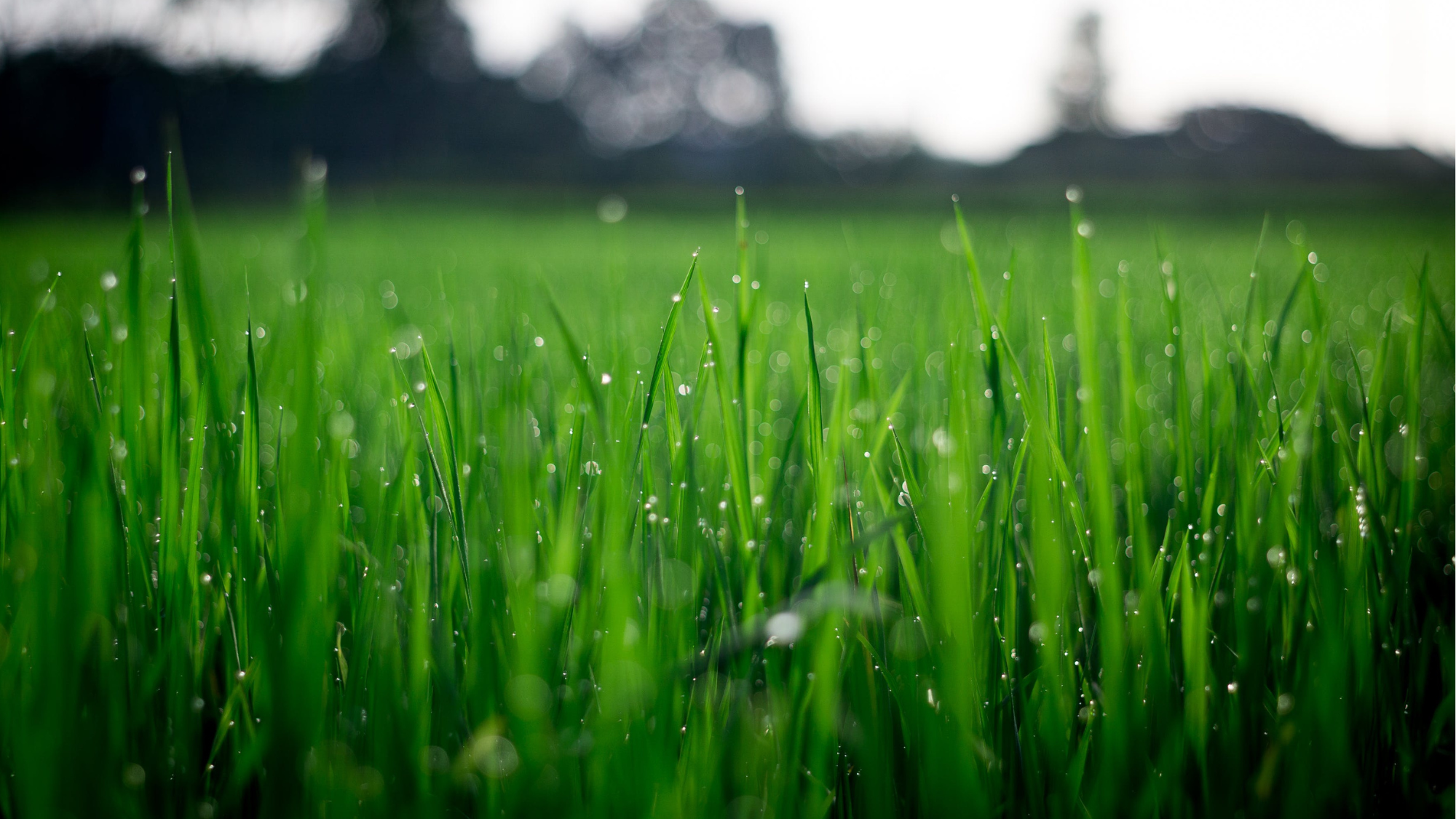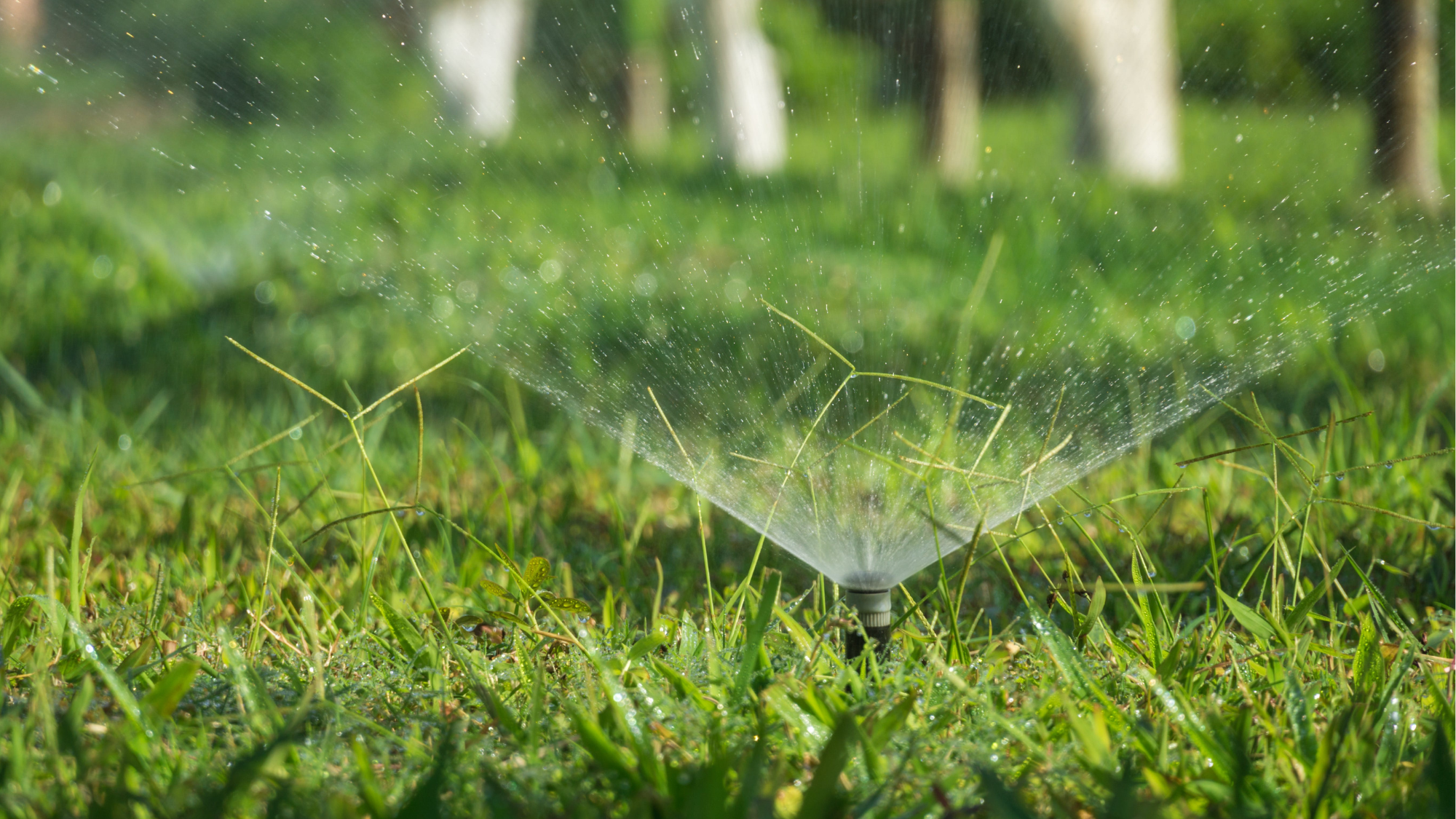
Type of aerator: Manual
Material: Alloy
Price: $43.99
This Vanpein lawn plug aerator is a manual tool that usefully comes with a storage tray, so you can keep the soil coils in one place. It's sturdy and durable and has three sharp tines for efficient lawn aerating.
Made from heavy-duty 2mm thick alloy, it has a foot pad to provide extra leverage and a padded handle.
It also comes with a tool that helps prevent blockages during garden aeration. The cleaning stick can also be used for weddings.
For
- Well made
- Versatile
- Comfortable handle
Against
- Lawn looks messy
- Clogs easily
- Challenging with clay-based soil
Type of aerator: Manual spike
Material: Alloy
Price: $38.99
The EEIEER lawn spike aerator is operated manually, is easy to set up and use, and is best for smaller yards because of its compact design.
It has a padded handle and comes with 15 long 2.6" spikes and a 12" hand tool to clean the aerator (which can also be used for weeding and transporting seedlings).
Made from high-density alloy, it's well-made and durable and can sustain a maximum load of 300 lbs.
For
- Compact design
- Heavy duty
- Padded handle
Against
- Not suitable for large gardens
- Spikes loosen easily
Maintaining a healthy green lawn requires some tender loving care, and that means regular watering, weeding, fertilizing, and mowing with either the best gas lawn mower or the best electric lawn mower.
Another important part of lawn care is aeration, which helps to maintain its health and appearance. Aeration involves creating small holes in the soil to allow air, water, and nutrients to get deeper into the roots of the grass. This helps reduce soil compaction, improve drainage, and promote root growth.
Soil can become compacted from a range of things, including mowing, snow, and wet weather, as well as people walking on it. Most lawns will benefit from being aerated at least once a year.
There are two types of aerators: plugs and spikes. Spike aerators come in different forms, from aeration shoes, pitchforks, rolling push aerators, and tow-behind spoke aerators that are ideal for larger yards. Plugs have hollow tines that pull out pieces of the grass and soil to loosen it up. In this expert guide, we've caught up with a few lawn care experts to help you determine which tool is best for the job.
Plug vs spike aerator: What's the difference?
Let's start by looking at the key differences between a plug and a spike aerator...
"Plug aerators remove small cores (plugs) of soil from the ground to create space for air, water, and nutrients to penetrate the soil. This makes the lawn less compact and promotes healthier growth. They are typically used on heavier clay soils and tend to be the more expensive option," Gerry Boerlage from FormBoss told Top Ten Reviews.
"Spike aerators puncture the soil and create lots of holes without removing any soil. This method is simpler and less intensive than plug aeration. It doesn't leave the lawn looking as messy, but it is generally considered less effective for addressing soil compaction.
"As an option, it is cheaper and easier than aeration, too, and can be done more regularly. One major drawback to consider: repeated use can actually contribute to compaction around the holes."
When it comes to aerating your lawn, there are a few key factors to consider when choosing between a plug or spike aerator. The main differences are how they work and the level of soil compaction they can help address, says gardening expert James Mayfield from Mayfield Environmental Engineering.
"Plug aerators actually remove whole plugs or cores of soil from the lawn as you work. This makes them very effective at relieving severe compaction issues and allowing water, air, and nutrients to penetrate deeper," James told Top Ten Reviews.
"Plugs are great for improving drainage and reducing thatch buildup over time, too. Of course, you do have to deal with removing and dispersing all those plugs afterward. It can also take more effort for larger lawns," says James.
Spike aerators drive blades into the ground to make small holes, but they don't remove any of the holes. This avoids unsightly soil plugs left in the grass but it isn't as effective in breaking up heavily compacted soil. But they can be useful when preparing a lawn for fertilizing or for winter overselling.
James said: "While not as effective on really compacted soil, spike aerators are a simpler option that can still help with milder compaction and lawn maintenance. The tradeoff is they don't penetrate as deep or reduce thatch the same way."
Plug vs spike aerator: Why use them?
One of the main reasons to use a lawn aerator is to loosen up compacted soil.
As James explains: "Both methods aim to improve oxygen, water, and nutrient flow inhibited by packed dirt. However, plug aerators target the root cause by opening space for new soil.
"Their deeper holes also aid with drainage and replacing old material with fresher ground better suited to robust grass growth."
Plug vs spike aerator: Which is best?
In general, spikes are best for small lawns or mild compaction, while plugs are ideal for large lawns or heavy compaction, Anwar Kaur, a gardening expert at Hindu Rope, told Top Ten Reviews.
"Spike aerators are usually cheaper, used for avoiding soil disruption, and tend to be easier to clean up. However, they can create compact soil, which is a bit ineffective and could require more effort since they are manually powered.
"For plugs, they usually can be used in the long-term; they also promote healthier grass and dethatch less. However, the lawn could be a bit messier; weeds can also be produced, and it can also stress out the lawn. They can also create more ventilation compared to spike aerators."
Oliver Hill, founder of the gardening site Garden List, told Top Ten Reviews that plugs were more effective because by extracting soil, they created extra space to allow air, water, and nutrients to penetrate deeper. "This promotes root development and rejuvenates the lawn," he said. "And while it is initially more disruptive, labor intensive and expensive than spike aerators, plug aeration offers longer-lasting benefits for soil health and lawn quality."
Oliver said manual plug aerators cost as little as $40, but motorized versions, or ones you attach to garden machinery, could range from $120-£220.

"Spike aerators tend to be less labor-intensive than plugs, especially the manual ones, and they are less disruptive to the lawn surface, too, making them ideal for light maintenance.
"However, they are less effective at reducing soil compaction as the holes close quickly, and can sometimes make the soil compaction worse. You may need to do it more often to maintain the aeration benefits," Oliver adds.
The decision between plug and spike aerators depends on the condition of your lawn and your objectives, Oliver warns.
"It's also important to consider the frequency of aeration needed and the effort you're willing to invest. For most homeowners looking to significantly improve lawn health, a plug aerator often proves to be the better choice despite the higher initial cost and effort due to its more substantial and lasting benefits."

Anwar agrees. He says plugs are the most cost-effective investment for lawn aeration: "To get the most bang for your buck, you should definitely get plugs since they open up more ventilation than spike aerators, which will allow more nutrients to come in," he says.
"The long-term durability of plugs also outweighs the manual operation of spike aerators. They can be more expensive, but the longer you use them, the more benefits they could provide for your lawn health."

James adds: "I'd recommend a plug aerator for lawns with serious drainage problems or dense soil that could use more of a refresh. The deeper holes and removal of plugs will really help rejuvenate the root zone over multiple treatments.
"For lighter compaction or small to medium lawns, a spike aerator would suffice - just easier to use without all the plug handling. And if you plan to aerate annually, a spike model keeps up fairly well, too."







